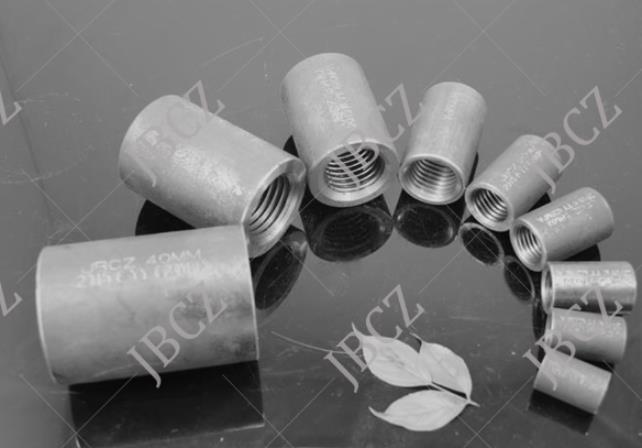Nowadays, reinforcing steel is one of the essential materials in the building industry construction. Compared with the traditional way of connecting reinforcing steel, the emergence of reinforcing rebar splices brings greater convenience to the connection of reinforcing steel and guarantees the smooth implementation of the whole construction behavior. So what are the characteristics of rebar splices and the use of precautions?

1. Characteristics of the reinforcing rebar splice.
(1) High strength of reinforcing rebar splices, stable and reliable quality;
(2) safe operation, no open flame, not affected by the climate;
(3) Strong adaptability of connection methods can be used for vertical, horizontal, inclined, overhead, underwater, and other directions of the connection of reinforcing steel.
2. The reinforcing steel connection construction requirements on the reinforcing rebar splice.
(1) the construction of the selected reinforcing rebar splices must be produced by the regular company, with factory certification.
(2) The reinforcing rebar splice material is generally low-alloy steel or high-quality carbon structural steel.
(3) the standard value of the tensile bearing capacity of the reinforcement joint should be greater than or equal to 1.20 of the standard value of the tensile bearing capacity of the connected reinforcement.
(4) The length of the reinforcing rebar splice shall be two times the diameter of the reinforcing steel.
(5) The reinforcing rebar splice should have a protective cover, which should indicate the specifications of the sleeve.
(6) The rebar splice should be protected from rust and dirt during transportation and storage.
3. Methods and steps of using reinforcing rebar splices.
(1) move the two connected bars to the ends of the reinforcing rebar splice, rotate the connecting sleeve so that the two bars are smoothly screwed into the connecting sleeve;
(2) When the rebar threads are screwed into half the joint, observe the number of exposed unscrewed rebar threads at both ends.
(3) After determining the number of exposed threads at both ends of the joint, use a special wrench or pipe wrench to rotate the joint sleeve so that the two connected bars are locked together in the middle of the joint.
4. Precautions for handling the steel bars to be processed.
(1) Strip and roll the reinforcement to be connected into threads, and use the connecting sleeve to connect so that the steel wire head and the connecting sleeve are connected as one to achieve equal strength connection;
(2) rebar end flush to make the rebar end perpendicular to the direction of the axis of the parent material. It is appropriate to use an abrasive cutting machine or other special cutting equipment, and gas cutting is strictly prohibited;
(3) The end of the reinforcing bar to be connected is processed into threads with a rib stripping and rolling straight thread machine, and the quality of the processed threads is self-checked;
(4) Protect the threads with special protective caps or joints to prevent the threads from being bumped or contaminated;
(5) Sample inspection of the threads that pass the self-inspection. (4) Classify and place them according to specifications and types.
The above is about the characteristics of rebar splices and the use of precautions. If you need more detailed information, welcome to contact us!